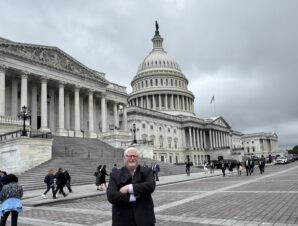Washington, D.C. — The National Association of Clean Water Agencies (NACWA) joins other major clean water organizations in supporting the bipartisan introduction of the Water Quality Protection and Jobs Creation Act of 2019. NACWA has long advocated for key funding reauthorizations and increases included in the bill. The legislation would provide a major increase in authorized funding for federal clean water programs—including the largest increase ever for the Clean Water State Revolving Fund—to help ensure that communities across the country have the resources they need to invest in improving aging infrastructure, addressing emerging water quality challenges, and delivering reliable clean water services at rates that are affordable for all.
The legislation, introduced in the House of Representatives by Reps. Peter A. DeFazio (D-OR 4th Dist.), Grace F. Napolitano (D-CA 32nd Dist.), Don Young (R-AK At-large Dist.) and John Katko (R-NY 24th Dist.), demonstrates a strong bipartisan sentiment to collaborate on infrastructure issues, and specifically on clean water, this Congress.
“NACWA applauds this significant bipartisan effort to reaffirm the federal commitment to investing in clean water and addressing our nation’s infrastructure challenges,” says NACWA CEO Adam Krantz. “This legislation authorizes essential federal investment for critical clean water infrastructure programs, ensuring that public water service providers—and the communities they serve—will have the tools they need to maintain and improve their systems protecting public health, the environment, and a strong economy.”
The bill reauthorizes several core programs that provide financing and technical assistance to local communities. These programs help local communities better manage the substantial costs associated with maintaining aging infrastructure and complying with the federal Clean Water Act. The federal government’s share of total national investment in water and wastewater is presently below 5 percent, meaning local ratepayers overwhelmingly bear the cost of construction, operations, maintenance, upgrades and compliance.
“As communities in every region are asked to do more with less, Congress’s move to increase the federal government’s investment-share in the delivery of clean water is a positive development,” Krantz continues.



